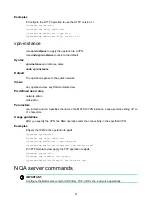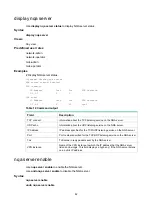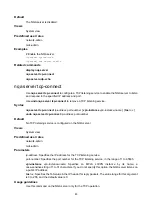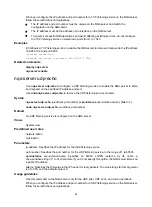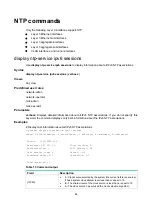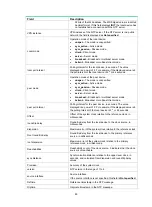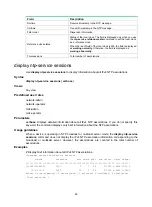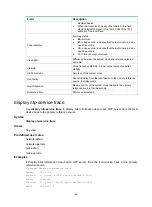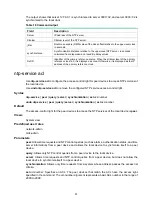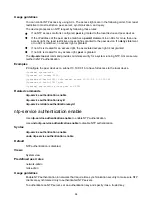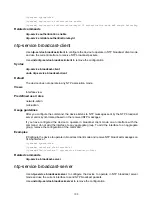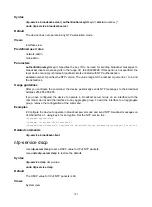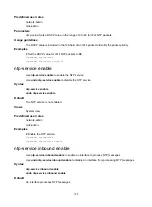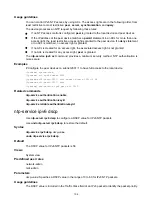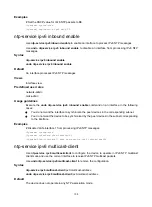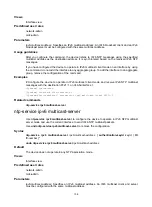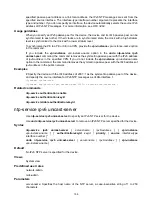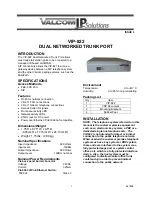
95
Stability: 0.000 pps
Clock precision: 2^-10
Root delay: 0.00000 ms
Root dispersion: 3.96367 ms
Reference time: d0c5fc32.92c70b1e Wed, Dec 29 2010 18:28:02.573
# Display the NTP service status when time is not synchronized.
<Sysname> display ntp-service status
Clock status: unsynchronized
Clock stratum: 16
Reference clock ID: none
Clock jitter: 0.000000 s
Stability: 0.000 pps
Clock precision: 2^-10
Root delay: 0.00000 ms
Root dispersion: 0.00002 ms
Reference time: d0c5fc32.92c70b1e Wed, Dec 29 2010 18:28:02.573
Table 17 Command output
Field Description
Clock status
Status of the system clock:
•
synchronized
—The system clock has been
synchronized.
•
unsynchronized
—The system clock has not been
synchronized.
Clock stratum
Stratum level of the system clock.
System peer
IP address of the selected NTP server.
Local mode
Operation mode of the local device:
•
unspec
—The mode is unspecified.
•
active
—Active mode.
•
passive
—Passive mode.
•
client
—Client mode.
•
server
—Server mode.
•
broadcast
—Broadcast or multicast server mode.
•
bclient
—Broadcast or multicast client mode.
Reference clock ID
For an IPv4 NTP server:
The field represents the IP address of the remote server when
the local device is synchronized to a remote NTP server.
The field represents the local clock when the local device uses
the local clock as a reference source.
•
When the local clock has a stratum level of 1, this field
displays
Local
.
•
When the local clock has any other stratum, this field
displays the IP address of the local clock.
For an IPv6 NTP server:
The field represents the MD5 digest of the first 32 bits of the
IPv6 address of the remote server when the local device is
synchronized to a remote IPv6 NTP server.
The field represents the local clock when the local device uses
the local clock as a reference source.
•
When the local clock has a stratum level of 1, this field

